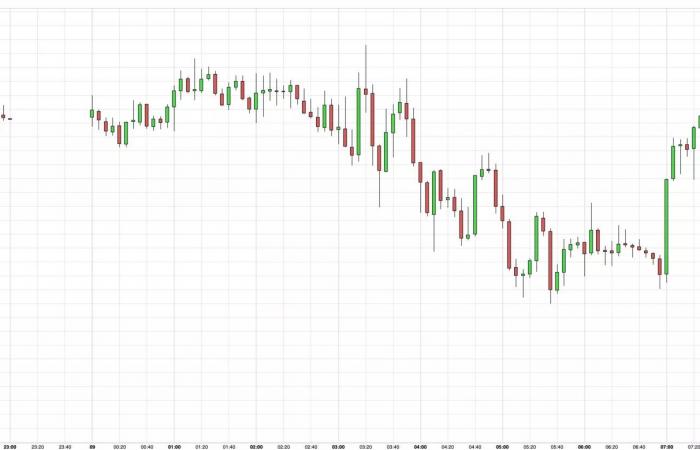The gold market (XAU/USD) is in decline for the sixth day in a row, and investors remain on guard over evolving Fed monetary policy and geopolitical developments. Indeed, expectations of a moderate drop in American interest rates and the possibility of a ceasefire between Hezbollah and Israel weigh heavily on the price of the precious metal.
Also read: Can this drop in the price of gold last for much longer?
A market under pressure: why gold is struggling to recover
On Wednesday, the price of gold remained low, just above $2,605, after hitting a three-week low. The US dollar is strengthening, supported by reduced expectations of interest rate cuts from the Federal Reserve (Fed). These expectations, coupled with hopes of a ceasefire between Hezbollah and Israel, contribute to maintaining pressure on gold, considered a safe haven in times of crisis.
The weakening of the gold price is also explained by technical selling, following the breakdown of the support level of $2,630, marking the lower limit of a short-term trading range. Investors are now awaiting the release of minutes from the latest Federal Open Market Committee (FOMC) meeting to determine near-term direction, particularly as US inflation data approaches.
Key factors that influence the price of gold
The US dollar has stabilized at a multi-week high reached last Friday, with a more than 85% chance that the Fed will cut its key rate by 25 basis points at the November meeting. Forecasts also point to a 50 basis point reduction in borrowing costs by the end of the year, according to the CME Group’s FedWatch Tool.
Prominent figures at the Fed, such as the New York Fed president and the Fed governor, have emphasized a gradual, data-driven approach, saying that lowering interest rates would be appropriate if progress on the inflation persists.
On the geopolitical level, Iran-backed Hezbollah recently demonstrated openness to a ceasefire, failing to condition the cessation of hostilities on the end of the war in Gaza. Investors are now scrutinizing the minutes of the September FOMC meeting and US inflation data for clear guidance on future Fed decisions.
Technical outlook: bearish trend persists
From a technical perspective, the recent break of the $2,630 threshold could mark an additional signal for bearish investors. However, the oscillators on the daily chart show a loss of momentum without confirming a definitively negative trend. In the event of a prolonged fall, the gold price could reach the next support around $2,560 and, potentially, head towards the $2,535-2,530 zone and the psychological threshold of $2,500.
Conversely, if gold exceeds the $2,635 level, it could offer selling opportunities up to the horizontal barrier of $2,657-2,658, with a potential rebound towards $2,670-2,672. A move beyond these thresholds could restart the uptrend and pave the way for a recovery towards September’s all-time high, around $2,685-2,686.
Why do interest rates impact the price of gold?
Interest rates play a central role in the valuation of gold. When rates rise, investors can earn a better return by choosing fixed-income assets, which increases the opportunity cost of holding gold. Thus, interest rate increases tend to put downward pressure on the price of gold, while strengthening the US dollar, since gold is denominated in dollars.
The next few days will be decisive for the evolution of the gold market. With the publication of the FOMC minutes and the US inflation figures, investors will have essential elements to adjust their positions and anticipate the Fed’s next movements.





